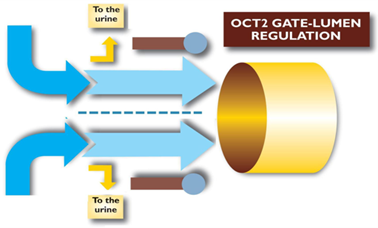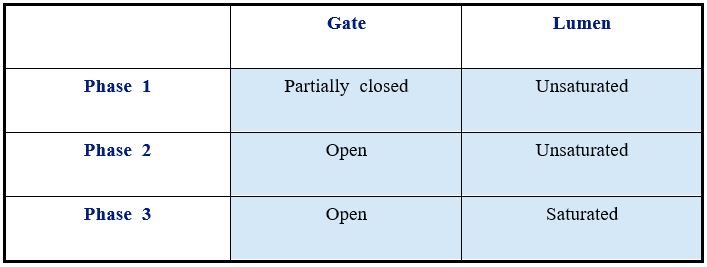I’m going to switch gears a little bit in this article. However, one can conceive of the neurotransmitters as the interface of physical and energetic regulation. After all, it is the neurotransmitters that stimulate the electrical discharge of the neurons, creating an energetic field of action.
The testing and treatment of neurotransmitter dysfunction is complex and grossly misunderstood by the majority of health care providers. In this article I will outline some of the underlying principles and provide sources for more information regarding this work.
Neurotransmitters do not cross the blood brain barrier, so amino acid precursors must be used. The only ones required are 5-HTP, L-dopa, and tyrosine, as serotonin and dopamine are the master neurotransmitters and the only ones that need to be normalized. Once this is accomplished, all of the other neurotransmitters and other down stream agents will normalize. 5-HTP and L-dopa are used because there is no feedback inhibition of conversion to serotonin and dopamine, respectively. In addition, nutrients required for synthesis are also supplied.
However, to simply supply neurotransmitter precursors is inadequate. L-cysteine must also be supplied in order to prevent the depletion of the methylation system. Any one of the thiols can be used, but L-cysteine is the cheapest agent available, and it is also involved in other functions. Listed below are the interactions that must be considered before the administration of any precursor.
As one can see, using only a single neurotransmitter precursor will deplete the other one, as well as the thiols. Using only a thiol, such as glutathione, will deplete the neurotransmitters.
 Figure 1
Figure 1
 Figure 2
Figure 2
These amino acids cannot be used indiscriminately, and testing is required to determine the status of the OCT2 receptor. This is the receptor that controls the levels of serotonin and dopamine. If the function of the OCT2 is not returned to normal, the neurotransmitter system will not function optimally.
Urine testing is the only reliable way to measure neurotransmitter levels. BUT, testing before amino acid therapy is started is worthless. All that is measured is a random excretion by the kidneys which is neither reliable nor can it be duplicated. Once therapy is started, the system must be placed in competitive inhibition, at which time urine testing is reliable and valid.
Interpretation of the urine testing is complex. There are three different phases of the OCT2 response: (serotonin is represented by the top blue arrow, dopamine by the lower blue arrow)
 Figure 3
Figure 3
 Table 1
Table 1
The system is only functioning at an optimal level when both serotonin and dopamine are in Phase 3.
To complicate matters even more, there are at present three identified ways in which the OCT2 is configured: serotonin dominant, dopamine dominant, and mixed dominant. Each of these types requires a different therapeutic approach in the application of the amino acid precursors. In addition, the dopamine dominant and mixed dominant types require the use of pill stops.
In the pill stop approach, the patient takes the nutrients for five days, then stops all of them for two days. The symptom responses on day five and the second morning of the pill stop are compared, which determines the next dosing change. Urine testing is also utilized for these types, but in a different way than for serotonin dominant patients.
What is really being treated is a relative nutritional deficiency state. Each person has a different dosing requirement of the amino acids. Until that dose is supplied, the system will not function normally. It appears that toxins, drugs, and inappropriately used amino acids are the main reasons for this state of nutritional deficiency. Therefore, each person’s dose will be different, and must be determined by testing.
Once the neurotransmitter system is returned to normal, it can take up to three months for all of the downstream effects to take place. This includes control and normalization of:
- All other neurotransmitters
- The hormone system
- Cytokines and immune function
- Nrf2
- Melanin
- Methylation and detox
- Melatonin
- And others
As a result, the following conditions/symptoms are improved, and often completely reversed:
- Parkinson’s
- Crohn’s/Ulcerative colitis/IBS
- Depression
- Anxiety/Panic attacks
- ADD
- Insomnia
- Fibromyalgia
- Hormone dysfunction
- Migraines
- Dementia
- Adrenal fatigue
- And many more
What I have presented here is a very brief overview of this therapy. For references and more information on this approach, visit www.neurosciencemyths.com. This has all of our papers in full text format. As one can tell from even this brief introduction, the use of amino acids to normalize neurotransmitter function is neither easy nor straightforward. Because of this complexity, seminars and a sixteen-week educational program are offered to train providers in the use of this therapy. It might seem to be a daunting task, but the results are well worth it and provide a powerful tool to help increase the health of your patients.
 An Exclusive Article for OIRF Supporters
An Exclusive Article for OIRF Supporters
From THE BRIDGE Newsletter of OIRF
Published August 2015
© Copyright 2015, Dr. Ted Cole, Ohio, USA



